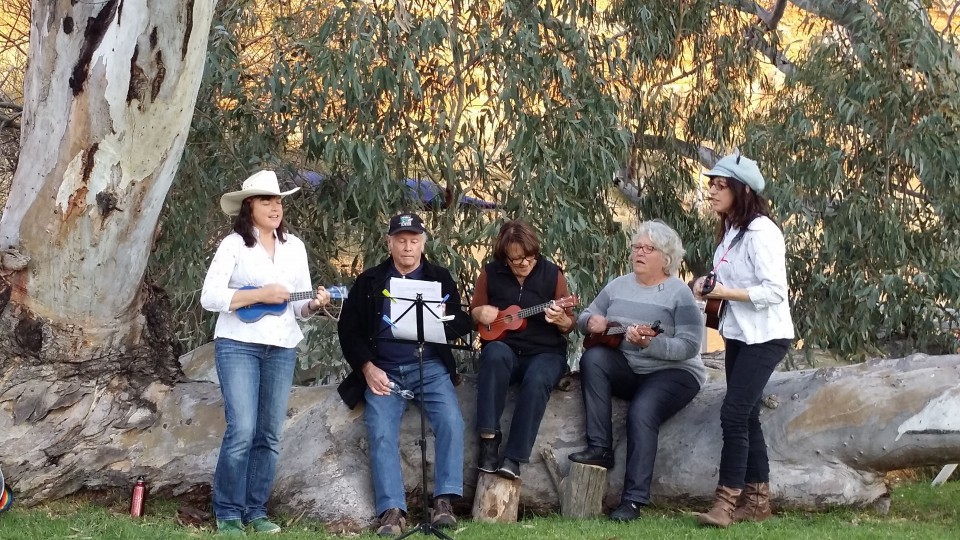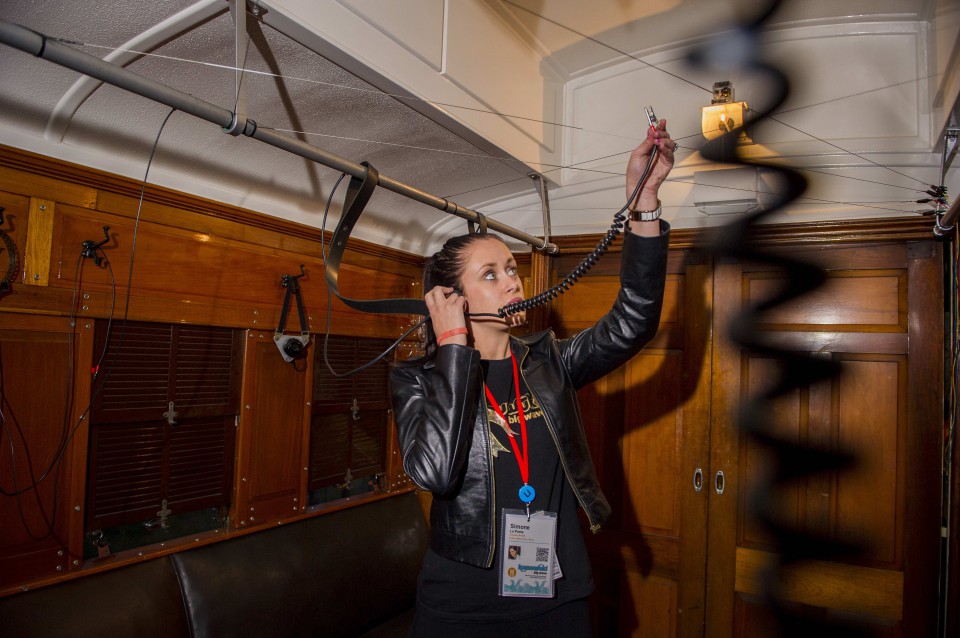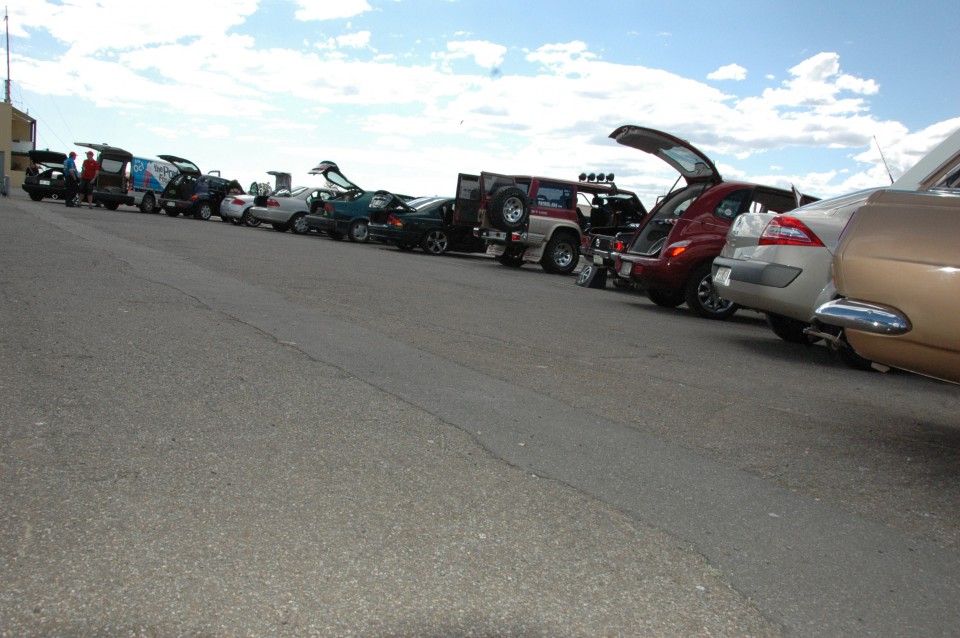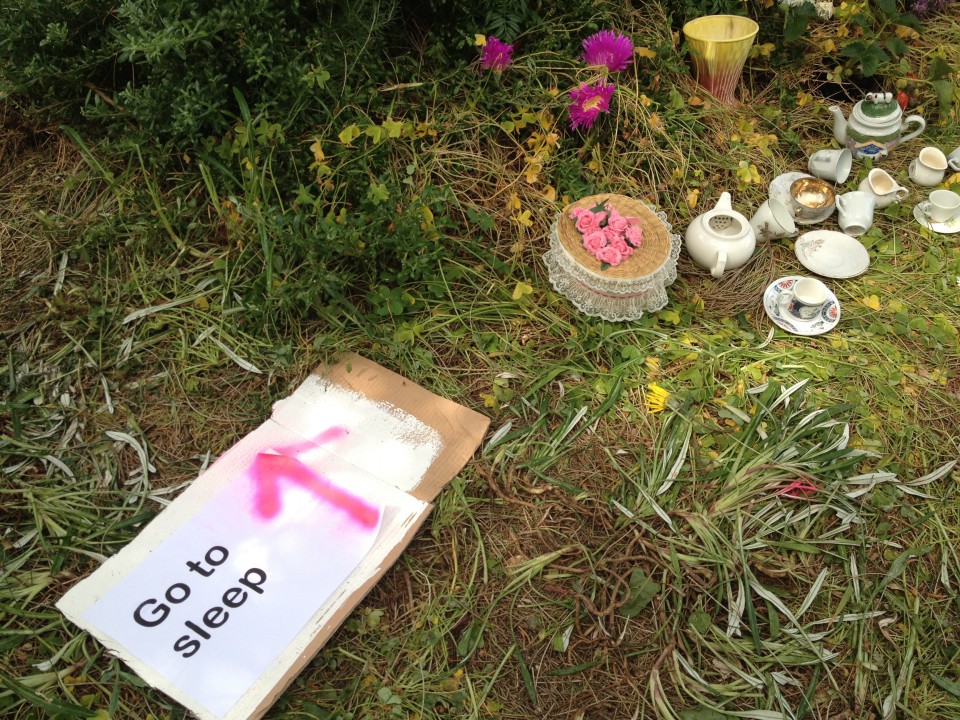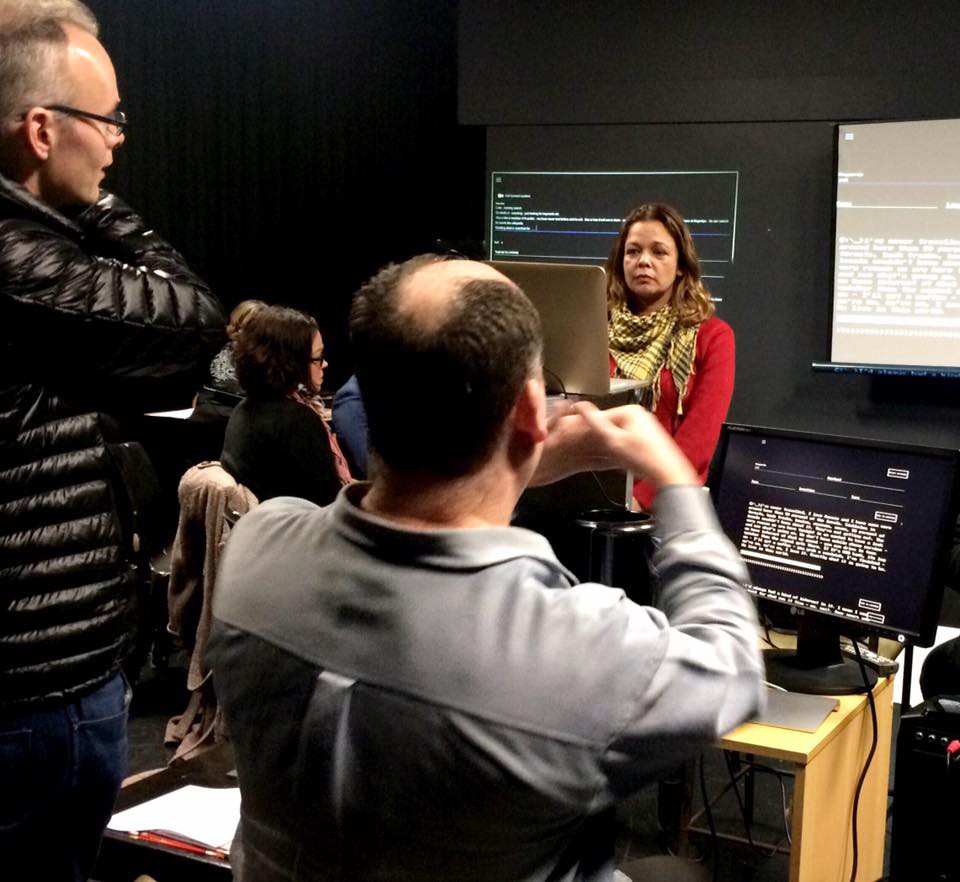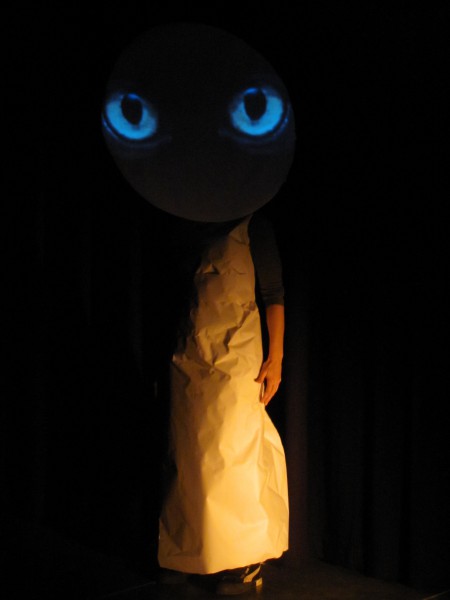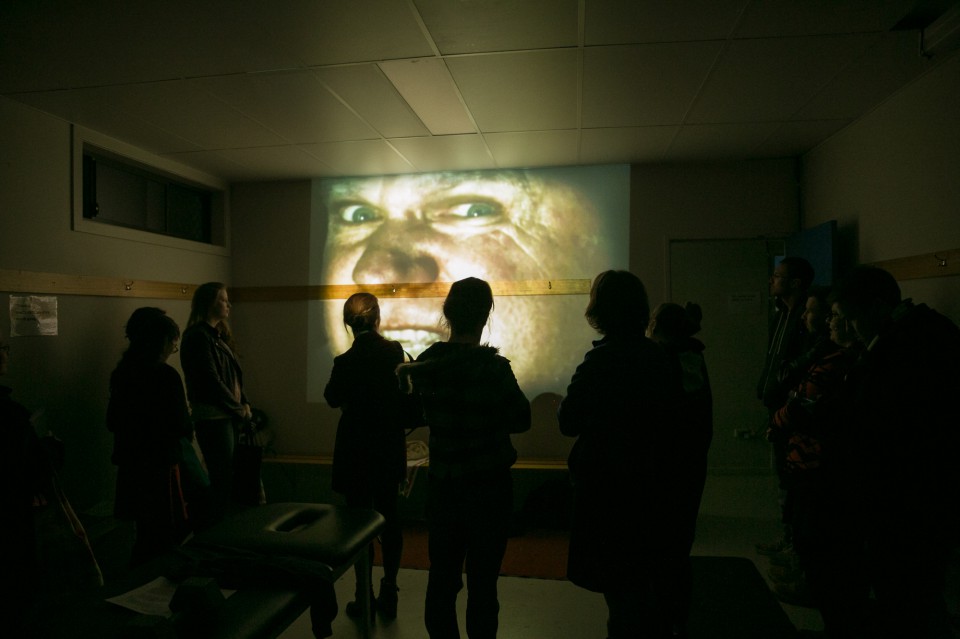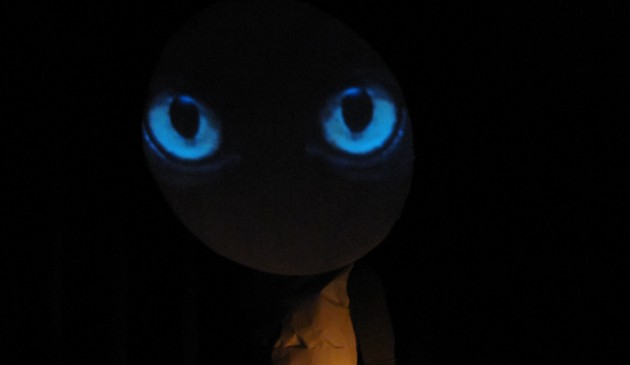
Vitalstatistix spoke with performance-maker and conversationalist Emma Beech and curator, producer and director/dramaturge Steve Mayhew, who is also Creative Producer at Country Arts SA.
Vitalstatistix and Country Arts SA will premiere Emma’s new work Life is Short and Long, in Port Adelaide and Wirrabara in October.
Vitals: Could you each tell us about your current artistic practice?
Emma Beech: I say that my practice is essentially having deep and meaningfuls with (mostly) strangers and then re-telling the gold moments of those conversations in a theatre show that I create and perform in.
To be in a position where I created the most obscure of pastimes for myself into an actual art practice still surprises me.
The essential drive behind this practice though is about connection – connection through the knowledge and experiences of people we walk by in the street being re-created into an intricate theatrical yarn. I am always, always more connected and therefore caring of a person or a thing or an opinion or a way of life if I know more about it. This is my contribution to that opening up of ourselves to others.
Steve Mayhew: As a curator, producer and director/dramaturge, I often find myself in dual roles, where one part of the job is very technical and practical; ensuring agreements are signed, budgets are made or adhered to and meetings are arranged and held. The flip of that is the role of a researcher, a thinker, questioner, strategist and outside eye. It’s in that part where I often get to reflect an artist’s decisions and work back at them through discussion, consider larger themes, ethical concerns, and so on.
Over the past decade, inside and outside of Country Arts SA, I seem to have forged quite an idiosyncratic specialisation in three areas of interest where I produce, curate, direct or dramaturge digital / participatory works, dance pieces and works that embody regional experimentalism.
I have also been known to make sound tracks, most recently for Larissa McGowan and her work Fanatic with Sydney Dance Company. I am currently working with NSW based director Alicia Talbot as a dramaturge/sound designer for a work that will premiere at Bundanon Trust’s Siteworks in a few weeks time where I will play live a DJ mix set of original and well known tracks to a six-hour improvised durational performance work.
V: Each of you has spent significant time working and living in regional South Australia. Can you tell us about some of your favourite places?
EB: Every place that I form a relationship with through work becomes a favourite place. It adds itself to the list.
I loved Goolwa for its surprises and quiet passion, and I love Wirrabara (the town I am currently gathering stories from, three hours due north of Adelaide in the Southern Flinders Rangers) for its quietness, complexity and history.
SM: For food you can’t go past The Metro Bakery in Mt Gambier; they serve excellent cheap meals and their staff are always happy and friendly. The Stone Hut Bakery in Stone Hut (on the way to Wirrabara) is also a find, when it’s open. In the last 12 months I discovered Arrosto Coffee, boutique coffee roasters from Renmark whose ‘Columbia Hacienda Black Label’ is pretty tasty. I always make sure I drop by Di Giorgio Wines in the Coonawarra, to top up my thirst for their sparkling. When possible (unfortunately rarely), I love relaxing near the flowing waters of the Murray River and by the beach in Goolwa or Port Elliot during winter.
V: Artists and cultural experiences contribute to places, towns and cities, especially when they are embedded rather than imported. Place-making is the jargon. How do you think artists contribute to making places? And what are the dangers of expecting artists to revitalise places?
EB: I think my work is more about reinvigorating the relationship locals have to their place. I think artists can help locals and outsiders to see beauty, to remember beauty and interesting details now forgotten or overlooked, through the reframing all forms of art provide.
It is a form of lovemaking, and artists do this lovemaking for a town with fresh eyes.
The issue I think with expecting artists to be place-makers is that there is a strategy to place-making which I think can halt the creative process and frame the re-experience of a place, even though art, into a sales pitch rather than an unique and chaotic artwork. A sales pitch only shows the good stuff, and in art and life I would argue you also need complicated, unresolved and unnoticed stuff.
SM: Here are three tasks all artists, funders, gate-keepers, cultural shapers and the general public should familiarise themselves with before even thinking about place-making.
Firstly: Read ‘The New Rules of Public Art’ by a UK organisation called Situations. (I just love these simple and direct tenets.)
Secondly: Equip yourself with an ethical and trustworthy practice and outlook in order to follow and/or accept the new rules.
Thirdly: Be brave, trust your instinct and don’t settle for the “I want one of those” or “This is the way I’ve always done it” syndromes.
V: Emma, Life is Short and Long is about crisis and resilience in three very disparate places. Do you have any advice about coping with crisis and developing resilience that you have learnt from your research for this show?
EB: It’s tricky. There are many different approaches, of course, as there are different people; but I have noticed that an exterior crisis, one that happens to you beyond your control, tends to do a lot of work in developing a person. Developing in a wise way.
However, after a long enough time, if that wisdom is not continually cultivated and worked on, it will go away. One must work at change, must work at resilience, on an almost daily basis. You need to be prepared to make some choices about the way you live. Be flexible. You need to know a couple of things that make you happy and keep doing them through any crisis situation and beyond. And you can’t expect external circumstances to prop you up. They will, of course, always change, and from what I’ve seen, holding on to something too tightly – a thing, an idea, a person – actually inhibits resilience.
You must also fight for what you believe in. This means knowing what you believe in and fighting for it; this fight will probably come to be fought at some time in your life. And if you don’t find it, it seems that most people later regret it.
V: Steve, what are some of the most exciting regional arts practices and models that you are seeing at the moment around the country?
SM: The regional arts practices and models that excite me the most are ones that embrace local artists whilst looking to the nation and the rest of the world for collaboration, nourishment and benchmarking.
In terms of regional dance, Dance North (Townsville, QLD) currently with ex ADT dancer Kyle Page as their Artistic Director seem to be doing some interesting works. It’s always worth keeping an eye on what Dalisa Pigram and Rachel Swain at Marrugeku (Broome, WA) are doing and Tasdance (Launceston, TAS) are very consistent with their engagement of nationally and local dancers.
As for regional theatre practitioners, I’ve been in conversation with Julian Louis from NORPA (Lismore, NSW) a bit recently and their work in development Three Brothers could very well be the next big thing. I also keep my eye on students graduating from the Bachelor of Creative Arts at the University of Wollongong (NSW), where Sarah Miller and ex South Australian and Red Shed Theatre alumni Tim Maddock and Catherine McKinnon lecture. Lyn Wallis’ directorship at Hot House Theatre (Albury, Wondonga, NSW/VIC) is starting to take shape also.
I think my colleague Eleanor Scicchitano at Country Arts SA is really doing some excellent work in making regional visual artists extend their practice whilst at the same time dragging the many regional South Australian volunteer run galleries kicking and screaming into the 21st century. The biennale visual arts festival Cementa (Kandos, NSW) held next April 2017 is also growing in stature.
I admire the true experimentalism of The Wired Lab (Cootamundra, NSW) and Punctum Inc (Castlemaine, VIC) who have managed to embed their practice deep within their regional communities and still have time to nurture people in sound art and live art (respectively) through residences and their own projects.
V: There is both a global and a localised sensibility to Life is Short and Long that could be likened to a large tree – deeply rooted with long branches. For each of you, how does this analogy (deeply rooted with long branches) extend to the ways you work with artists, communities and other collaborators?
EB: I think for me it is knowing that for any story there is rarely a simple tie off. One story goes on and on and on forever in a way. So when you talk about deep and long I think this applies to every person I have ever told a story about.
When I collaborate with artists I think this sense of ongoing time, and timelessness, ends up becoming represented in many different forms in the work, and I hope we all work towards creating the anti to the ‘happily ever after’ myth. With collaborators, I seem to find my people and stick to them. Not because I feel we have to, but because I seem drawn to continuing this longness and deepness with them as well. We grow, our work grows, life goes on.
In terms of community, and how I work with them, it is so simple. It is so simple, and basic, and ancient really, this oral story telling, this meeting and sharing our lives and then re-sharing them in a dramatic performance, and I think this relates to the idea you are talking about.
SM: I was only reflecting the other day to some other artists that I believe I discovered my fascination with a global and local sensibility between the age of eight and seventeen when my family dislodged themselves from an easy Adelaide suburban lifestyle and chose to travel across Europe and the UK in a small van for nine months and then immediately after, chose to reside in my great-great-grandfather’s house in Kadina on the Yorke Peninsula.
This literal local/global/local experience affected me at this young and formative age. I have always been innately aware that there is a bigger picture to the smaller one and vice versa, that many things are connected and don’t happen in isolation and that the only constant is change. This practice of zooming in and out seems to be reflected every day in my collaborative work and life.
V: You each have long-term associate relationships with Vitalstatistix. Emma you have developed and produced a number of works with us, been part of Adhocracy and you are also a very regular audience member! Steve, Vitals and Country Arts SA collaborate on projects each year and you have an artistic collaboration with our director Emma Webb. What value does these types of long-term relationships between artists, organisations and collaborators hold? What do you see as Vitalstatistix’s place/role locally and nationally?
EB: You can see just what that artist is capable of and be ready to give opportunities to that artist when you can see they are ready. This is a great gift for both parties.
I love knowing I can go to Vitalstatistix with an idea, go to Adhocracy with something really risky, and have a chance to try it. That I am trusted, that I trust.
I think this builds an artist, it allows them to grow bigger and stronger and richer and that is good for everyone – for the art, for audiences, for travelling interstate / overseas even. This is growth, I love to grow, and I think that long-term relationship allows this to happen.
I therefore feel that this says what Vitals role is locally and nationally – allowing artists to grow their flavour and style in a local setting, with its own nuances and details and quirks, and then getting them out there nationally to share in the artistic results of that. Vitals is an incubator of significant proportions.
SM: Long-term relationships are built on trust and alignments of ethics. Collaborations are the building blocks to long-term relationships. Trust and ethical alignments lead to collaborations. It’s a bit Escher and Vitals is on the continuum of a Penrose Triangle.
V: How are you feeling about the future of the arts locally and nationally? What kind of arts initiatives and arts organisations do you think are most critical at this time?
EB: I am excited. I can’t help it – I know now that this kind of shift we are seeing, this kind of change will bring something new and dynamic. So I’m excited. I think places that keep people supported, keep people developing are really important right now – there needs to be places to do our thing and audiences to see our thing and this is critical.
I also think that we need to become extremely smart and work out what we need to do to be the professionals we’ve always wanted to be, or to maintain what we already are, to be thorough, to be sure of what we are doing and why and that requires some attention, that rigor, and often we are busy busy making so that the space and time and money to answer those questions is not really available.
So seeing those become available I think will be crucial, especially in SA where I see there may be less options available to us to do this. To be challenged to do this.
SM: South Australia seems to be currently suffering from a weird style of leadership that I think is unsure of itself, where it might be going, slightly inward looking and lacking confidence. All played very publically through a very opposite tone on social media, which is constantly provided by certain leaders in the arts.
I find social media feeds fascinating. You have your ‘broadcasters’, the “what about me’s?” this is the “everything I do other than work feed” or “this is the work I do” or “family family family” and of course “cats and star wars”.
I see the style of cultural leadership in South Australia and Adelaide to be very different to say Victoria and Melbourne who on the other hand seem to be developing and attracting a serious amount of diverse and measured leaders. From the outside, it seems it’s about many and not just about a privileged few and their positions. They relate locally with a national and international perspective, they have that global/local view, the ability to encourage and gently persuade with vision.
David Pledger is writing some excellent stuff of late – I really enjoyed this article…
And as an addendum I recently got caught down a rabbit hole around entrepreneurship. Listen to this Adelaide born podcast and then talk to me about the future.




